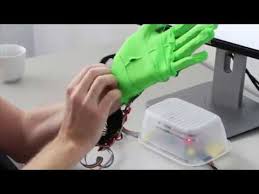
Breaking News
We Americans Need to Dig Deep into Historical Perspective
 A timeless clip of Michael Burry explaining how he used credit default swaps...
A timeless clip of Michael Burry explaining how he used credit default swaps...
 The next financial crisis won't start in a bank lobby. It's already brewing in the market
The next financial crisis won't start in a bank lobby. It's already brewing in the market
Top Tech News
 This tiny dev board is packed with features for ambitious makers
This tiny dev board is packed with features for ambitious makers
 Scientists Discover Gel to Regrow Tooth Enamel
Scientists Discover Gel to Regrow Tooth Enamel
 Vitamin C and Dandelion Root Killing Cancer Cells -- as Former CDC Director Calls for COVID-19...
Vitamin C and Dandelion Root Killing Cancer Cells -- as Former CDC Director Calls for COVID-19...
 Galactic Brain: US firm plans space-based data centers, power grid to challenge China
Galactic Brain: US firm plans space-based data centers, power grid to challenge China
 A microbial cleanup for glyphosate just earned a patent. Here's why that matters
A microbial cleanup for glyphosate just earned a patent. Here's why that matters
 Japan Breaks Internet Speed Record with 5 Million Times Faster Data Transfer
Japan Breaks Internet Speed Record with 5 Million Times Faster Data Transfer
 Advanced Propulsion Resources Part 1 of 2
Advanced Propulsion Resources Part 1 of 2
 PulsarFusion a forward-thinking UK aerospace company, is pushing the boundaries of space travel...
PulsarFusion a forward-thinking UK aerospace company, is pushing the boundaries of space travel...
 Dinky little laser box throws big-screen entertainment from inches away
Dinky little laser box throws big-screen entertainment from inches away
 'World's first' sodium-ion flashlight shines bright even at -40 ºF
'World's first' sodium-ion flashlight shines bright even at -40 ºF
Smart glove uses stretch-sensing tech for highly accurate hand gesture capture

It's able to capture hand movements with much more detail and nuance than most existing solutions.
To achieve this, the researchers behind the glove created a silicone compound holding 44 embedded stretch sensors, combining it with a soft fabric layer. The input device requires very little training, and uses a special constructed set of algorithms to process the sensor data coming through from the gloved hand.
This combination of hardware and software means highly accurate hand and finger movements can be captured in real time. No external cameras or sensors are needed to record the movements, and the gloves themselves can be manufactured at a low cost. They're apparently lightweight and comfortable to wear too.
"This is an already well-studied problem but we found new ways to address it in terms of the sensors employed in our design and our data-driven model," Oliver Glauser from ETH Zurich in Switzerland said in a press statement.
"What is also exciting about this work is the multidisciplinary nature of working on this problem. It required expertise from various fields, including material science, fabrication, electrical engineering, computer graphics, and machine learning."

 The AI money machine!
The AI money machine!

